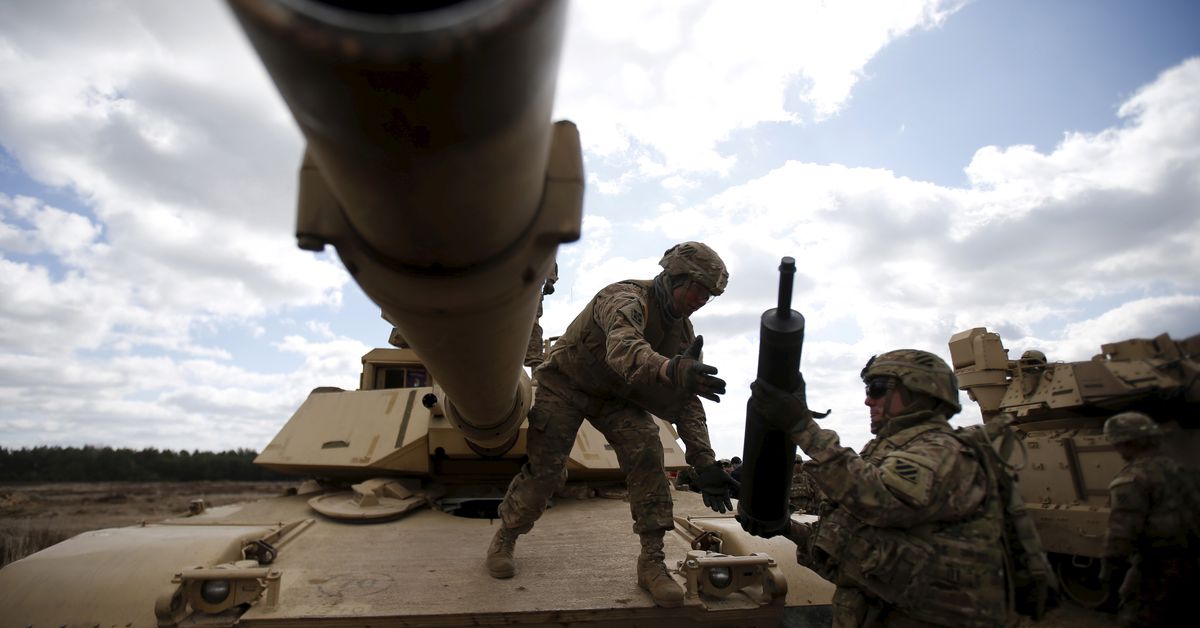cross-posted from: https://lemmus.org/post/587773
Edit: antiwar article, quotes for both articles
The rounds, which could help destroy Russian tanks, are part of a new military aid package for Ukraine set to be unveiled in the next week. The munitions can be fired from U.S. Abrams tanks that, according to a person familiar with the matter, are expected be delivered to Ukraine in the coming weeks.
Although Britain sent depleted uranium munitions to Ukraine earlier this year, this would be the first U.S. shipment of the ammunition and will likely stir controversy. It follows an earlier decision by the Biden administration to provide cluster munitions to Ukraine, despite concerns over the dangers such weapons pose to civilians.
The United States used depleted uranium munitions in massive quantities in the 1990 and 2003 Gulf Wars and the NATO bombing of former Yugoslavia in 1999.
Still, the radioactive material could add to Ukraine’s massive post-war clean-up challenge. Parts of the country are already strewn with unexploded ordnance from cluster bombs and other munitions and hundreds of thousands of anti-personnel mines.
https://news.antiwar.com/2023/09/03/us-to-arm-ukraine-with-toxic-depleted-uranium-ammunition/
But at this point in the war, the administration has shown it’s not concerned about damaging Ukraine’s environment. In July, the US started arming Ukraine with cluster bombs, which spread small submunitions over large areas. Unexploded submunitions, or bomblets, can be found by civilians years or decades after use. Because of their history of killing civilians, cluster munitions have been banned by over 100 countries.
Still, the radioactive material could add to Ukraine’s massive post-war clean-up challenge
Ah yes, like how America cleaned up the DU rounds it littered across Iraq and Afghanistan and Syria.
Oh wait the cleanup never happened.
There was never going to be any “post-war clean-up” so I am not sure why they are talking about the “challenge” in the first place.
Clean up never happened in Socorro, NM. Note: this is depleted uranium, the stuff left over when one removes the most radioactive part. It’s mainly harmful because it’s a heavy metal, and is toxic.
Maybe that has something to do with Syria still being a warzone. But you’ve got a point. These cleanup efforts will be financed by those who remain - the victims of war.
This is the best summary I could come up with:
The rounds, which could help destroy Russian tanks, are part of a new military aid package for Ukraine set to be unveiled in the next week.
The munitions can be fired from U.S. Abrams tanks that, according to a person familiar with the matter, are expected be delivered to Ukraine in the coming weeks.
It follows an earlier decision by the Biden administration to provide cluster munitions to Ukraine, despite concerns over the dangers such weapons pose to civilians.
The United States used depleted uranium munitions in massive quantities in the 1990 and 2003 Gulf Wars and the NATO bombing of former Yugoslavia in 1999.
The U.N. nuclear watchdog, the International Atomic Energy Agency, says that studies in former Yugoslavia, Kuwait, Iraq and Lebanon “indicated that the existence of depleted uranium residues dispersed in the environment does not pose a radiological hazard to the population of the affected regions.”
Parts of the country are already strewn with unexploded ordnance from cluster bombs and other munitions and hundreds of thousands of anti-personnel mines.
The original article contains 499 words, the summary contains 172 words. Saved 66%. I’m a bot and I’m open source!
As I had no idea what depleted uranium munitions were, here’s a few extracts from a BBC article which explains more about them:
What is depleted uranium?
Depleted uranium is naturally-occurring uranium, which has been stripped of much - but not all - of its radioactive matter.
It is a waste product from the process through which uranium is enriched for use in nuclear power plants and nuclear weapons.
Why do some weapons use depleted uranium?
Uranium is a very dense metal, so depleted uranium can be used to reinforce the armour-plating on tanks.
It can also be put on the tips of bullets, mortar rounds and tank shells, to penetrate conventional tank armour.
Depleted uranium shells sharpen on impact, which further increases their ability to bore through armour, and they ignite after contact.
How dangerous are depleted uranium weapons?
Depleted uranium is mildly radioactive.
“The fear is that if depleted uranium shells land on the ground, they may contaminate the soil,” says Dr Miron. “That is why the US and its Nato allies sparked controversy when they used them in Kosovo.”The UN General Assembly ordered a review into the health effects of depleted uranium weapons in 2007, and international bodies have carried out several further reviews.
The United Nations Scientific Committee on the Effects of Atomic Radiation (UNSCEAR) found no significant poisoning was caused by exposure to depleted uranium.
However, the International Atomic Energy Agency (IAEA) says there could be a risk of radiation to individuals who handle fragments of depleted uranium rounds.
A study published in the journal Environmental Pollution in 2019 suggests there may be links between the use of depleted uranium weapons and birth defects in Nasiriyah, in Iraq.
Another concern, says the UN Office for Disarmament Affairs, is that “in a post-conflict environment, the presence of depleted uranium residues can further increase the anxiety of local populations”.
A 2022 UN Environment Programme (UNEP) report said it was concerned about possible depleted uranium use in Ukraine, warning it can cause “skin irritation, kidney failure and increase the risks of cancer”.
“The chemical toxicity of depleted uranium is considered a more significant issue than the possible impacts of its radioactivity,” it says. residues can further increase the anxiety of local populations".
wow, thanks for the info!






